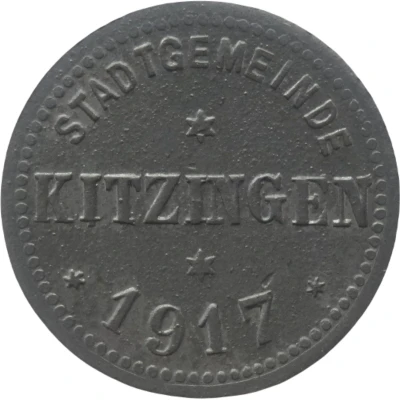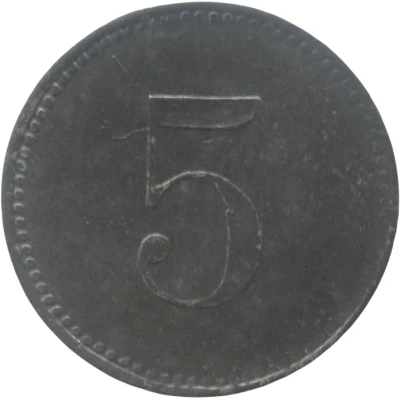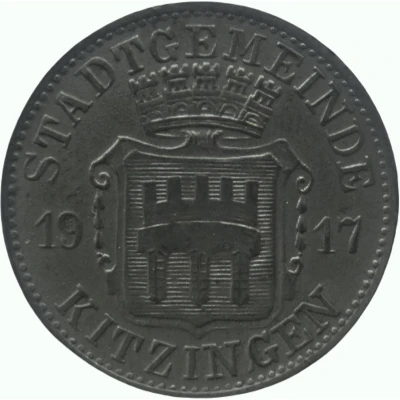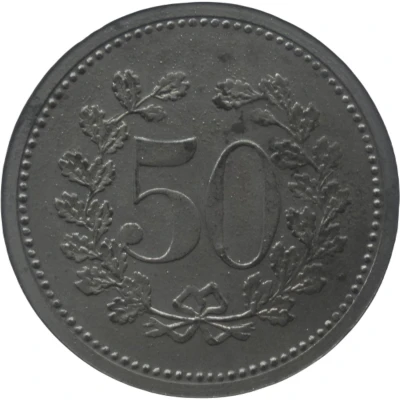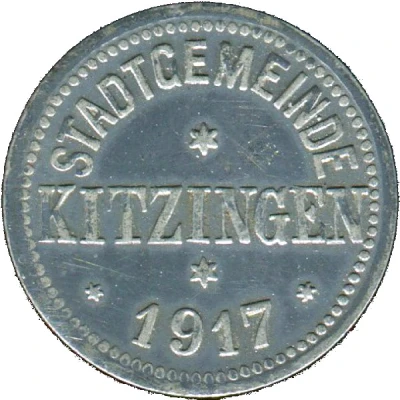
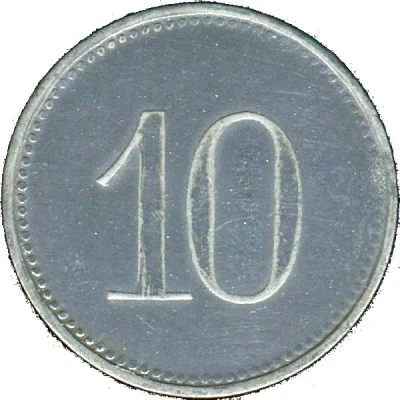

© derfnumismatics
10 Pfennigs - Kitzingen
1917 year| Zinc | 1.72 g | 20.0 mm |
| Issuer | City of Kitzingen (Federal state of Bavaria) |
|---|---|
| Emperor | William II (Wilhelm II) (1888-1918) |
| Type | Standard circulation coin |
| Year | 1917 |
| Value | 10 Pfennigs (10 Pfennige) (0.10) |
| Currency | Mark (1914-1924) |
| Composition | Zinc |
| Weight | 1.72 g |
| Diameter | 20.0 mm |
| Thickness | 0.89 mm |
| Shape | Round |
| Technique | Milled |
| Orientation | Medal alignment ↑↑ |
| Demonetized | Yes |
| Updated | 2024-10-04 |
| Numista | N#50632 |
|---|---|
| Rarity index | 66% |
Reverse
Pearl rim surrounding denomination centered
Script: Latin
Lettering: 10
Edge
Plain
Comment
Most copies nickel platedInteresting fact
The 10 Pfennigs - Kitzingen 1917 coin from the City of Kitzingen (Federal state of Bavaria) made of Zinc weighing 1.72 g is interesting because it was produced during a time of economic and political turmoil in Germany. The coin was minted in 1917, during World War I, when the country was experiencing severe economic difficulties, including inflation and a shortage of metals. As a result, the German government was forced to use alternative metals, such as zinc, to produce coins. This coin is a unique example of how a country's currency can be impacted by historical events.
Price
| Date | Mintage | VG | F | VF | XF | AU | UNC |
|---|---|---|---|---|---|---|---|
| 1917 | 20000 | - | - | - | - | - | - |
Values in the table are based on evaluations by sales realized on Internet platforms. They serve as an indication only for 10 Pfennigs - Kitzingen 1917 coin.
